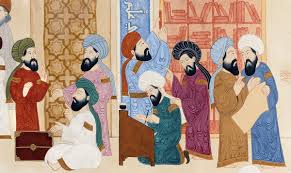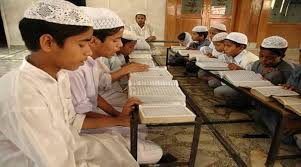Mubarak Kapdi
February 2, 2025

I remember a 4 years old cartoon by R.K. Laxman. In which a father scolds his approximately 4/5 year old child and says that if any guest asks what you want to be when you grow up, it is enough to say that you will become an engineer, there is no need to add every time that you will become an engineer and go to America or Canada. Today, scenes like this cartoon are seen everywhere in this country. Plans are being made to get primary or secondary education here and those whose financial status is a little bit better are preparing to study in a foreign university. All the failures of its education system have become apparent to foreign countries. Therefore, every country there has formulated policies to attract students from here. In our country, due to the cultivation of hatred in the minds of students, an atmosphere of complete uncertainty and even despair has prevailed in all educational and social circles, which is why today India is proving to be a very fertile country for all foreign universities. All these countries have come to this conclusion and are confident that with the decline of the Indian education system, there is no need to roll out the red carpet for the students here. Not much formal technical work is also required, they will all come in droves.
How did the matter of the Indian education system become so complicated? When did its quality decline start? Apparently, in the light of statistics, it is seen that the education system of this country comes in third place in terms of size after the United States and China. There are 1140 universities and 5,000 colleges here, seeing and thinking about this expansion, we all cannot contain our joy. But what is this? The global rating has revealed that only 19% of the engineering graduates of this country are employable. That is, 81% of the engineering graduates are incompetent? There is a lot of talk about IIT, IIM, AIIMS and NIT of this country, but when it was studied very carefully, then the secret was revealed that those institutions are really praiseworthy, but because of the students there and not because of the teachers or the administration of those institutions! Yes! These worthy students of ours are proving to be an asset. Of course, the asset of students has become or is going to become an adornment of other countries and is going every year, every month, even every day.
The story of the decline of the education system of this country is very long, but today we will briefly review it. For many centuries, the education system of this country consisted of madrasas and gurukuls. Then the English era began. During that period, Thomas Macaulay was the first to offer suggestions for a significant change in the education system. He lived in India from 1834 to 1838, and he prepared a systematic plan to leave a European imprint on the education system here. In which the topmost suggestion was to eliminate Persian and make English the medium of education. Through his writings, he convinced the entire subcontinent that Persian, Arabic and Sanskrit languages were not in sync with the times. He even left no stone unturned in proving English poetry and literature to be the highest and most sublime of all the languages of the world. There was no shortage of thinkers like Macaulay in the British government. In those two centuries, Arab research was also talked about, but the British showed the foresight to adopt all these research articles and books in English, thus giving life to the English language.
In 1854, Charles Ode, the President of the Board of Directors of the East India Company, sent a message for Indian educational reforms. (Which is called Wood’s Dispatch) in it, he made his educational policy very clear. Ode had written that the education of Indians should be such that it would prove profitable for British trade and which could provide the company with reliable employees. Yes, the British did not introduce an educational system but a system of establishing factories that would provide jobs. Therefore, when the British established the universities in Madras, Bombay and Calcutta in 1857, the British had given the Indians the dream that when they got a degree from those universities, they would get jobs in the British government. That is, the equality that the British gave to this country in the name of the educational system is: Education = Job. Obviously, the result of this equality is that the educational system here revolves only around livelihood or job. And on this basis, today information is becoming common but ilm or education is not becoming common.

Meanwhile, the study of the educational progress of our community was being changed. Two parallel educational systems came into existence here, one of modern schools, colleges and universities and the other of religious madrasas and Darul Uloom. For a long time, these two systems continued to run like two parallel lines of Euclid that never meet, and the sad thing about this was that the passengers of these two parallel trains kept laughing at each other, making fun of each other. After the continuous rebuke of our community Israel and the Sangh Parivar, this intensity decreased somewhat. Of course, for almost two centuries, the supporters of these two systems kept pulling the clothes of Islamic societies in opposite directions.
The extent to which all our countries have become slaves to imperialism due to the failure to establish their education system properly is evidenced by this prayer recorded in Libyan textbooks: “O God, help me to love Italy, which is my second homeland.” In place of Italy, the name of America, Canada or Britain can be added to other colonies. The period of decline of the education system began when the slogan of ‘education, education’ was raised, but the upbringing system was excluded from it. Science was introduced so that students would remain captivated by the fascination of everything from atoms to space galaxies and never even think that there is a creator of this vast and vast cosmic system. On the contrary, the work of cursing the system of madrasas and Darul Uloom continued continuously. No one asked these so-called intellectuals how Ustad Ahmed Lahori, who was the chief architect of the Taj Mahal and Jama Masjid in Delhi, was passed out from the same Darul Uloom. Why did a graduate of the madrasa, Ustad Rumi Khan, gave the Mughal Empire a defensive system of cannons? These same religious madrasas taught generations for centuries about arithmetic, geometry, medicine, Persian, Arabic, logic, architecture and philosophy. The post-independence governments specifically assured us that these religious madrasas were cut off from the current trend and did we believe them? When the British left this country, they left such a terror in every system that no one dared to deviate from the so-called principles they had established. Even in the preparation of the Constitution of India, all the leading legislators considered the English Constitution to be the final and inviolable and irrevocable. All the laws, regulations, order, principles of administration or education constitution are almost copies.
The British rulers considered English and European thought to be the last word. At that time, education was entrusted to the greatest thinker of that era, Maulana Azad, who had been completely broken by the tragedy of the Partition of India. Of course, he left his mark on the education system and established the University Grants Commission, as well as some higher technical institutions, madrasas, etc. Of course, from this period, saffron elements were making their way in the ruling Congress party. These were the elements who were thinking that this country had been a slave for centuries and had become free, in which Muslims had got their share. Now this is their saffron nation. In which no minority has any place. (2nd and final installment next week).
Owner Dr. Mubarak Kapdi designed by Sufiyan Mulla
Copyright © 2024. All rights reserved.